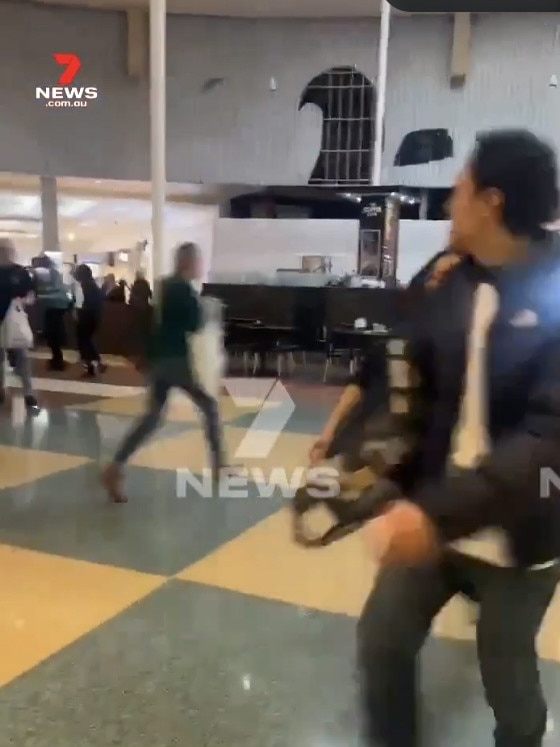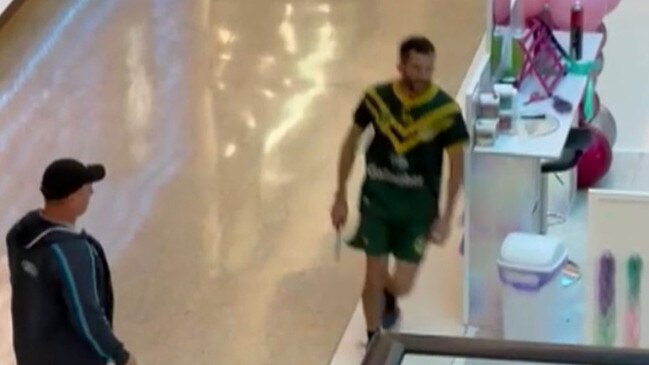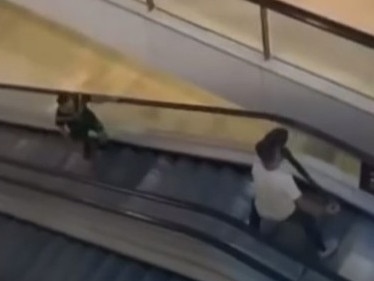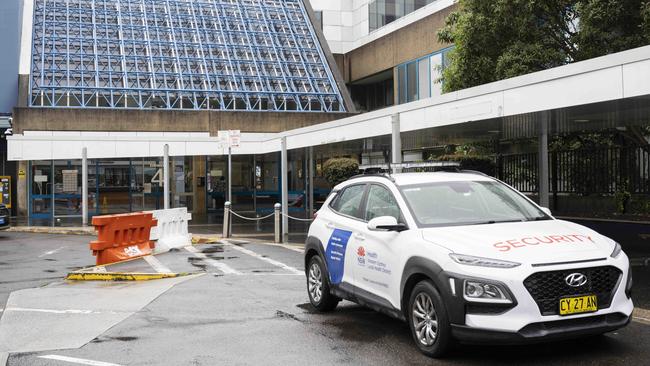Chilling trend of ‘lens syndrome’ during public attack incidents prompts expert warning
When sirens blared and a message warned of an armed offender, some shoppers didn’t run or hide - but did something else experts say is a growing trend.
Social
Don't miss out on the headlines from Social. Followed categories will be added to My News.
When Joel Cauchi went on a stabbing rampage at Westfield Bondi Junction, killing six people and injuring a dozen more, countless bystanders had an unusual reaction that experts describe as “worrying”.
Rather than flee to safety, many chose to pull out their mobile phones and film Cauchi, some even sharing the vision to social media while the attack was still underway.
Within minutes of NSW Police Inspector Amy Scott shooting him dead, ending the mayhem in April, images of his body lying in a pool of blood were circulating widely online.
“I call it ‘lens syndrome’,” security and behavioural expert Scott Taylor told news.com.au.
“It’s a worrying trend when people’s first response is to focus on filming an attack or incident rather than evacuating the area.”


Mr Taylor, founder of Praesidium Risk and Resilience, consults to retailers, healthcare providers, mass gathering organisers and government agencies on site risks, procedural enhancement and training.
When people are suddenly confronted with a dangerous situation, the typical response calls into one of the three Fs, Mr Taylor said.
“It’s fight, flight or freeze. But we now need to add a fourth, it seems - film.”
The “really troubling response” was on full display again on Sunday when a group of allegedly brawling youths sparked a major security scare at Adelaide’s largest shopping centre, Westfield Marion.
Some of the youths were allegedly armed with “expandable batons” and there were reports of a knife, sparking an emergency lockdown by the centre’s management.

Blaring alarms and urgent warnings posted on digital advertising displays of an “armed offender” send shoppers and workers scrambling.
“But again, like Westfield Bondi, a number of bystanders chose to stop and film the incident on their phones,” Mr Taylor said.
“Those people didn’t know exactly what was happening. They’d been warned of an armed offender and urged to evacuate, but they stayed put to get some videos.
“They didn’t know if the area was secure, what type of weapon was involved, how many offenders there were. It’s really worrying.”
Emerging research suggests people could become “desensitised” to a dangerous situation when viewing it through the screens of a mobile device, he said.
“What happens is, they disassociate a bit with what’s happening in front of them because they’re watching it through a screen.
“They’re putting themselves and others in danger.”

In 2017, police in the UK rolled out a campaign aimed at young people urging them not to film terror attacks and other violent events.
A bombing at an Ariana Grande arena concert in Manchester and an attack on a London underground train that year saw videos and images circulating online within moments of both bombs detonating.
At the time, Metropolitan Police Deputy Assistant Commissioner Lucy D’Orsi said the trend was concerning.
“We are particularly concerned when we see people - young and old - using their mobiles to film scenes when they should be moving away from the danger,” she told the BBC.

In the US city of Boston, an impassioned debate was sparked after a series of violent attacks on commuters using the city’s train network, in which bystanders didn’t intervened and instead filmed the incidents and uploaded them to social media.
Todd Farchione, a clinical psychologist and assistant professor at Boston University’s Center for Anxiety and Related Disorders, believes a sense of “reward” comes with capturing a commotion.
“We tend to get reinforced for [recording fights],” Dr Farchione told Boston Magazine.
“It can show up on the news, or get a million hits on YouTube, and that’s what is getting reinforced.
“To me … if you have time to pull out a camera and film someone getting into a fight, you would think if you can do that, you should be using that energy to help the person and alert the police.”

The Australia-New Zealand Counter Terrorism Committee last year released guidelines on dealing with active armed offenders in crowded places.
It noted that individuals who stop to film an attack are “taking action that puts themselves or others in danger”.
This is especially relevant considering an active armed offender is likely “attempting to kill and injure as many people as possible within the shortest period of time”.
Mr Taylor said there are other potential consequences of someone stopping to film an attack, on top of being injured or killed.
“The concern is that if someone is stopping to film a situation, others around might wrongly believe it’s safe and the danger has passed.
“The speed of the evacuation can also be seriously impacted if people aren’t getting away from an area as quickly as they can.
“And finally, when danger presents, there might be a sense of safety in groups. If someone has stopped to film and they attract others to gather around them, that group becomes a prime target.”

A spate of violent incidents involving knives show the need for authorities to consider a broad rollout of stab-proof vests, he said.
On Friday night, two security guards at Westmead Hospital in Sydney’s west were allegedly stabbed by a patient and a third had his shoulder dislocated while trying to assist his colleagues.
A fourth person, a nurse, suffered minor injuries.
“The fact one person can [allegedly] stab two security guards and dislocate the shoulder of a third suggests current approaches aren’t adequate,” Mr Taylor said.
“More and more places are implementing stab-proof vests, including health facilities. I think it’s worthwhile seriously considering rolling them out widely.
“They could also assist security personnel working in retail settings, which have seen a spate of these violent incidents.”
Police charged a 39-year-old man with a number of serious offences over the Westmead incident.
Following yesterday’s security scale at Westfield Marion, three male youths, two aged 15 and one 16, have been charged with a range of offences.
Originally published as Chilling trend of ‘lens syndrome’ during public attack incidents prompts expert warning





